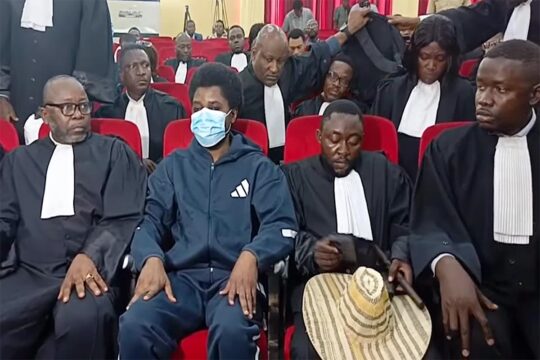The first instance chamber had retained as the mode of participation "assistance and complicity", considering that Seromba had not directly and physically committed a crime.
The re-qualification of "assistance and complicity" in the "commission", in spite of the absence of direct participation of Seromba, resulted in the increase of Seromba's sentence from 15 years to life in prison; but, especially, widened the concept of "commission" in going beyond the, until now, accepted legal framework.
The appeal judges, Chinese Judge Liu Daqun issued a dissenting opinion, saying that "Seromba crossed the line separating aiding and abetting from committing genocide and became a principal perpetrator in the crime itself".
Contrary to the traditional position adopted in first instance, the appeals chamber declared that "commission", in itself, is not limited to direct and physical perpetration.
It takes the approach decided in the Gacumbitsi case which states that in the context of genocide "direct and physical perpetration" need not mean physical killing; other acts can constitute direct participation in the actus reus of the crime.
Judge Liu does not adhere to this reasoning. He notes that the judges transformed into general theory a concept which was applicable only to the genocide by applying it to the crime of extermination. He reminds that the international criminal tribunals have already convicted for "commission" as a non-direct action in the crime ascribable to the defendant. But for that, they had used the concept of "joined criminal enterprise", what seems not to have been argued in the Seromba case.
The concept of "joint enterprise" was born from the practice of the tribunals instituted after the Second World War and was part of usual international law. According to the appeals chamber of the International Criminal Tribunal for the former Yugoslavia (ICTY) in the Tadic ruling of 15 July 1999, it is "upheld, albeit implicitly, on the Statute of the International Tribunal".
The ICTY appeals chamber explains why "in wartime [...] most of the time these crimes does not result from the criminal propensity of singles individuals but constitute manifestations of collective criminality: the crimes are often carried out by groups of individuals acting in pursuance of a common criminal design".
The penal responsibility can then be retained which, although not having committed the physically crime, facilitated the perpetration of it and made it possible. The appeal judges in the Tadic case added that "the moral gravity of such participation is often no less, or indeed no different, from that of those actually carrying out the acts in question".
In this type of joint criminal enterprise the participants are animated by the same criminal intention, they act according to a common intention. Two other categories of joint enterprise were released: a systemic one where the crimes are committed by members of military or administrative units like those, for example, of the concentration camps; "the third category concerns cases involving a common design to pursue one course of conduct where one of the perpetrators commits an act which, while outside the common design, was nevertheless a natural and foreseeable consequence of the effecting of that common purpose".
Joint criminal enterprise was proven, still according to the Tadic ruling, by the demonstration of "the plurality of persons, the existence of a common plan, design or purpose which amounts to or involves the commission of a crime provided for in the Statute, and participation of the accused in the common design".
It is "a form of "commission" of a crime within the meaning of article 6 1) of the Statute". And, as Judge Liu reminds, "if the prosecutor intends to call upon the theory of joint criminal enterprise, he must clearly say it in the indictment" (Simba, first instance ruling ICTR, 14 July 14 2004).
In the Seromba case, the Prosecutor had decided to prosecute the direct "commission". The joint criminal enterprise, that he does not seem to have argued, could not thus be called upon in appeal.
The appeals chamber, while retaining, despite everything, the mode of participation by "commission", widened the concept considerably by creating almost a third form. But it had already started to do so in a preceding case.
In the ruling of 7 June 2006 against Sylvestre Gacumbitsi, the appeals chamber indeed created a particular case of indirect "commission" in the particular context of genocide. It considered that while being present on the scene of the crime "to supervise and direct the massacre and participated in it actively by separating the Tutsi refugees so that they could be killed" he did not "simply order or plan the genocide from a distance and leave it to others to ensure that his orders and plans were carried out; nor did he merely "instigate" the killings".
In the Seromba case, which exceeds the individual case because he is the first official of the Catholic Church convicted for his participation in the genocide, the appeals chamber convicts the priest, inter alia, for the fact of having adhered and to have endorsed the decisions to destroy the Nyange Church and to exert his authority on the driver of the bulldozer who destroyed it. This person underlines the chamber, "had accepted Seromba as the only authority". The appeals chamber notably mentioned Seromba's refusal to hold mass for the refugees who requested it from him.
AV/PB/MM/SC
© Hirondelle News Agency



